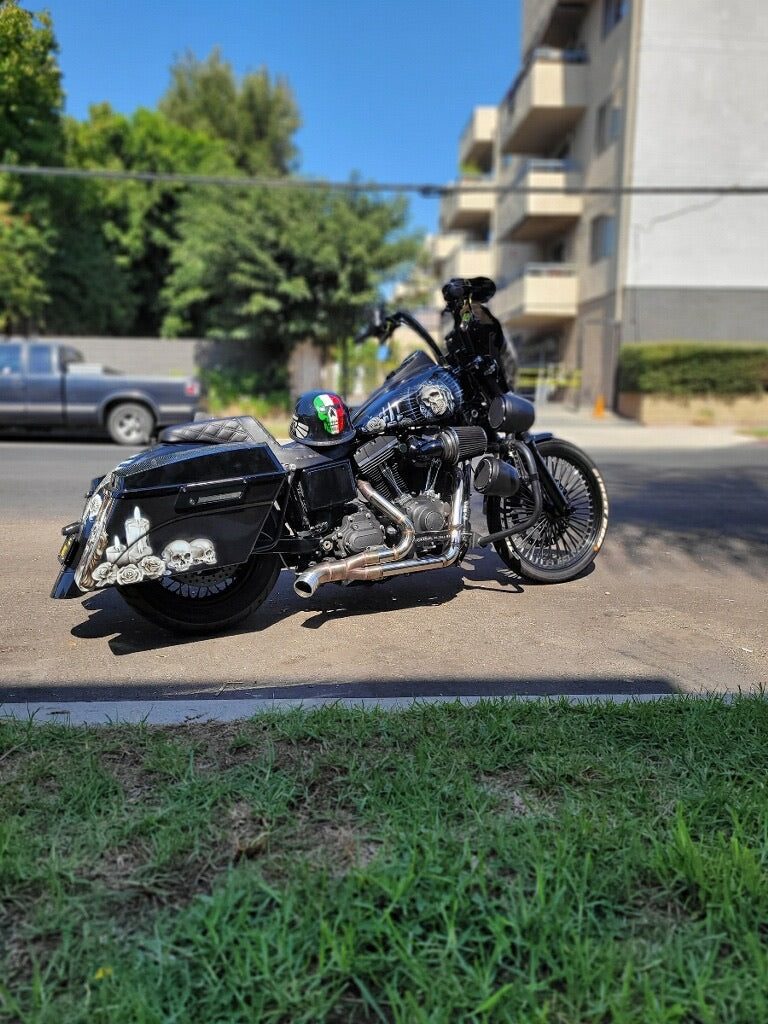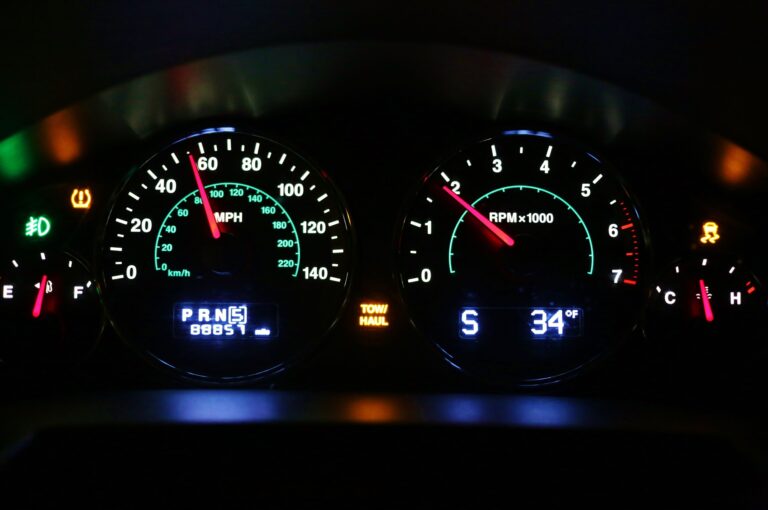Building a Custom Exhaust: Boosting Performance and Unleashing Power
To build a custom exhaust, gather the necessary tools and materials and follow a step-by-step process for optimal results. Transforming your vehicle’s exhaust system can enhance its performance, increase horsepower, and produce a unique sound.
Building a custom exhaust allows you to tailor it to your specific preferences and requirements. Whether you’re a car enthusiast looking to improve your vehicle’s performance or someone who wants to add a personal touch to their ride, creating a custom exhaust can be a rewarding and satisfying project.
In this guide, we will walk you through the essential steps and considerations to help you build a custom exhaust that meets your needs. By following a systematic approach, you can successfully modify your vehicle’s exhaust system and enjoy the benefits it brings.

Credit: www.everythingpolarisrzr.com
Benefits Of Custom Exhaust Systems
Custom exhaust systems offer a range of benefits when it comes to enhancing your vehicle’s performance. By installing a custom exhaust, you can experience enhanced horsepower and torque, resulting in improved acceleration and overall power. Additionally, these systems can contribute to improved fuel efficiency, allowing you to save on gas and reduce emissions. Moreover, custom exhausts create a more aggressive engine sound, providing a thrilling driving experience. This is achieved by optimizing the exhaust flow and removing restrictions that can cause excessive backpressure. By reducing exhaust backpressure, custom exhausts can also help in prolonging the life of your engine and improving its overall efficiency. Overall, investing in a custom exhaust system can significantly enhance your vehicle’s performance, fuel efficiency, and sound, making it a worthwhile upgrade for any car enthusiast.
Components Of A Custom Exhaust System
Building a custom exhaust system involves several key components that work together to optimize performance and enhance the sound of your vehicle. These components include headers, catalytic converters, mid-pipes, mufflers, and exhaust tips.
| Headers: | Headers are designed to improve exhaust flow by replacing the restrictive stock exhaust manifold. |
| Catalytic Converters: | Catalytic converters help reduce harmful emissions by converting pollutants into less harmful substances. They are essential for meeting legal requirements in many areas. |
| Mid-pipes: | Mid-pipes connect the headers to the mufflers and help control the resonance and overall sound of the exhaust system. |
| Mufflers: | Mufflers play a vital role in reducing noise and backpressure. They are available in various designs, such as chambered, straight-through, or performance-oriented designs. |
| Exhaust Tips: | Exhaust tips are the visible part of the exhaust system. They come in a range of styles and materials, allowing you to customize the appearance of your vehicle. |
By carefully choosing and installing these components, you can create a custom exhaust system that enhances both the performance and aesthetic of your vehicle.
What Is Exhaust Backpressure?
Exhaust backpressure refers to the resistance encountered by spent engine gases as they exit the exhaust system. It is a crucial aspect to consider when building a custom exhaust system for a vehicle.
Definition And Significance
Exhaust backpressure is defined as the pressure that builds up in the exhaust system due to various factors. It is important to understand its significance when customizing the exhaust system for improved performance and efficiency.
Factors Affecting Exhaust Backpressure
| Factors | Impact on Backpressure |
|---|---|
| Diameter and length of exhaust pipes | The size and length of the pipes directly affect the backpressure levels. Smaller pipes and shorter lengths result in higher backpressure. |
| Catalytic converters and mufflers | These components can restrict the flow of exhaust gases, increasing backpressure. Removing or replacing them can reduce backpressure. |
| Exhaust manifolds | Design and construction of the manifold impact backpressure. Headers or performance manifolds can improve flow and reduce backpressure. |
| Engine modifications | Changes such as camshaft upgrades or increased airflow can affect backpressure levels. Tuning the exhaust system accordingly is essential. |
Considering these factors and their impact on backpressure is crucial when building a custom exhaust system. It ensures optimal performance and balance between power gains and backpressure levels.
Impact Of Exhaust Backpressure On Performance
Exhaust backpressure has a significant impact on the performance of a vehicle. It is important to understand that decreased engine power is one of the direct consequences of high backpressure. With restricted airflow, the engine is unable to efficiently expel exhaust gases, leading to reduced power output.
Moreover, the overall efficiency of the engine is compromised as a result of backpressure. Restricted airflow causes the engine to work harder, resulting in increased fuel consumption and reduced fuel efficiency. This can have a negative impact on the vehicle’s overall performance and fuel economy.
In addition to decreased engine power and reduced efficiency, high exhaust backpressure can also potentially lead to engine damage. The excessive pressure can cause strain on various engine components, such as valves, pistons, and cylinder heads. Over time, this can result in increased wear and tear, decreased engine lifespan, and costly repairs.
Importance Of Custom Exhaust In Reducing Backpressure
When optimizing the performance of a vehicle, one crucial factor to consider is the exhaust system. A custom exhaust can significantly reduce backpressure, enabling improved engine efficiency and power output. One aspect to pay attention to is the optimal pipe diameter. Choosing the right diameter for the pipes ensures improved flow and minimizes restrictions. Another component to consider is the use of high-flow catalytic converters and mufflers. These components are designed to allow exhaust gases to flow more freely, reducing backpressure. Lastly, minimizing bends and restrictions in the exhaust system is vital. A smooth and unrestricted pathway for the exhaust gases enhances the overall efficiency of the system, allowing the engine to perform optimally.
By focusing on these key elements, a custom exhaust system can effectively reduce backpressure, maximizing engine performance and efficiency. So, whether you’re looking to enhance the power output or improve fuel efficiency, investing in a custom exhaust is a worthwhile choice for any vehicle enthusiast.
Step 1: Research And Planning
Building a Custom Exhaust Step 1: Research and Planning Understanding vehicle requirements When building a custom exhaust, it is crucial to have a clear understanding of your vehicle’s requirements. Analyze the specific performance needs, such as increased horsepower or improved fuel efficiency. Consider the make and model of your vehicle, as well as any modifications or upgrades you have already made. This will help you determine the specific components needed for your custom exhaust system. Legal considerations It is important to comply with local laws and regulations when modifying your vehicle’s exhaust system. Research the legal requirements in your area regarding noise levels and emissions. Familiarize yourself with any restrictions or permits that may be required. Adhering to these legal considerations will help ensure a smooth and trouble-free installation process. Selecting the right components Choosing the right components for your custom exhaust system is crucial to achieving the desired performance and sound. Research and compare various options, such as different mufflers, headers, and catalytic converters. Consider factors like material quality, design, and compatibility with your vehicle. Opt for high-quality components from reputable manufacturers to ensure durability and optimal performance. In conclusion, the first step in building a custom exhaust is conducting thorough research and planning. By understanding your vehicle’s requirements, considering legal considerations, and selecting the right components, you can lay a solid foundation for a successful custom exhaust installation.Step 2: Removing The Stock Exhaust System
When removing a stock exhaust system, it’s important to take certain precautions to ensure a safe and smooth process. One common challenge is dealing with rusted or stuck parts. These can make the removal more difficult, but with the right approach, it can be managed effectively.
One key tip is to use penetrating oil on the bolts and nuts to help loosen them. Let the oil sit for a few minutes before attempting to remove the parts. It’s also important to use the proper tools, such as wrenches or sockets, to avoid damaging the components.
If the parts are severely rusted or stuck, applying heat with a torch can help break the rust or corrosion. However, it’s crucial to exercise caution and be mindful of any flammable materials nearby.
By preparing properly, using the right tools, and taking necessary safety precautions, you can successfully remove a stock exhaust system, even when dealing with rusted or stuck parts.
Step 3: Customizing And Fabricating Exhaust Components
When building a custom exhaust, one crucial step is customizing and fabricating the exhaust components. A key technique used in this process is mandrel bending. This technique allows for smooth bends in the exhaust system, ensuring efficient airflow and performance.
In addition to mandrel bending, welding techniques are also important to consider. Proper welding ensures strong and durable connections between the various exhaust components. The choice of welding technique may depend on factors such as the material being used and the desired aesthetics.
During the customization process, it is essential to carefully plan and measure the exhaust components to ensure a precise fit. This includes determining the right length and angle for each pipe, as well as considering any necessary modifications to accommodate other components in the vehicle.
Step 4: Installing The Custom Exhaust System
Proper alignment and fitting is crucial when installing a custom exhaust system. It ensures optimal performance and prevents any leaks that can compromise the system.
Once you have chosen the right custom exhaust system for your vehicle, start by carefully positioning the new components in place. Align the pipes and mufflers with the existing exhaust mounts and hangers. Use clamps or brackets to secure them tightly.
Next, check for any gaps or misalignments between the new components and the vehicle. Make any necessary adjustments to ensure a perfect fit. This will help prevent any exhaust leaks that can pose a risk to both the engine and the environment.
After the installation, it’s important to thoroughly test the system for any leaks and assess its overall performance. Start the engine and listen for any unusual noises or vibrations. Inspect the joints and connections visually for signs of leaks, such as soot deposits or moisture. These issues should be addressed promptly to maintain the integrity of the custom exhaust system.
Regular Maintenance And Cleaning
Regular maintenance and cleaning are essential for keeping the exhaust system in top condition. By following a few simple tips, you can ensure that your custom exhaust performs at its best and lasts longer.
Cleaning techniques for different components of the exhaust system vary slightly. For the exhaust pipes, use a mild detergent and warm water to remove any dirt or grime. Scrub gently with a soft brush to avoid damaging the surface. For the exhaust tips, use a specialized metal cleaner to polish and restore their shine.
| Component | Cleaning Technique |
|---|---|
| Exhaust Pipes | Use a mild detergent and warm water. Scrub gently with a soft brush. |
| Exhaust Tips | Use a specialized metal cleaner for polishing. |
Regularly check for any loose or damaged parts, such as clamps or hangers, and tighten or replace them as needed. It’s also important to inspect the exhaust system for any signs of rust or corrosion. If any issues are detected, it’s best to address them promptly to prevent further damage.
By implementing these regular maintenance and cleaning practices, you can ensure that your custom exhaust stays in optimal condition, providing you with better performance and longevity.
Upgrading Exhaust Components For Enhanced Performance
Building a Custom Exhaust
Upgrading your exhaust components is a great way to improve the performance of your vehicle. To achieve enhanced performance, two key components to consider are high-performance headers and catalytic converters.
High-performance Headers
High-performance headers are an essential part of building a custom exhaust system. They are designed to improve exhaust flow and increase power output. With their larger diameter tubes and smoother bends, they reduce exhaust backpressure, allowing the engine to breathe more efficiently. This leads to better throttle response, increased horsepower, and improved fuel efficiency.
Catalytic Converters
Catalytic converters play a crucial role in reducing harmful emissions. However, they often restrict exhaust flow, limiting performance gains. To overcome this, high-performance catalytic converters are available that offer improved flow without sacrificing environmental protection. These performance-oriented converters feature advanced catalyst technology, enabling better exhaust gas flow and increased horsepower.
Performance Mufflers And Exhaust Tips
In addition to headers and catalytic converters, upgrading to performance mufflers and exhaust tips can further enhance the sound and performance of your custom exhaust system. Performance mufflers are designed to reduce restriction and provide a deeper, more aggressive exhaust note. Exhaust tips, on the other hand, add a stylish finishing touch to your exhaust system, allowing you to customize the appearance of your vehicle.
Troubleshooting Common Issues With Custom Exhaust Systems
Building a custom exhaust system for your vehicle can provide enhanced performance and a unique sound. However, it’s not uncommon to encounter issues along the way. Two common problems that car enthusiasts face with custom exhaust systems are exhaust leaks and excessive noise or drone.
Identifying And Resolving Exhaust Leaks
Exhaust leaks can occur due to faulty gaskets, welds, or loose connections. It’s important to identify and address these leaks promptly to prevent further damage and maintain optimal performance. Inspect the exhaust system for any visible signs of leakage, such as sooty residue or unusual noises. Tighten loose connections and replace any damaged gaskets or faulty welds. If the issue persists, professional assistance may be required.
Dealing With Excessive Noise Or Drone
Excessive noise or drone can be a nuisance and may even violate noise regulations. To reduce these issues, consider installing resonators or mufflers that are designed to minimize noise without compromising performance. Additionally, check for any loose hangers or brackets that may be causing vibrations. Proper insulation can also help dampen sound. If you’re unsure about the best approach to address this problem, consult with an experienced exhaust specialist who can recommend suitable solutions.
Frequently Asked Questions Of Building A Custom Exhaust
Can I Make My Own Custom Exhaust?
Yes, you can create your own custom exhaust as long as you follow these guidelines. Be concise, use active voice and avoid starting sentences with certain phrases. Keep it unique, plagiarism-free, and easy to understand. Stay within 50 words.
What Pipe To Use For Custom Exhaust?
Use stainless steel or aluminized steel pipes for custom exhaust systems. Stainless steel is durable and resistant to corrosion, making it a good choice. Aluminized steel combines the strength of stainless steel with the affordability of mild steel. Both options provide excellent performance and longevity for your custom exhaust.
How Much Does It Cost To Build An Exhaust?
Building an exhaust varies in cost depending on factors like the vehicle type and desired specifications. It can range from a few hundred dollars to several thousand dollars.
How Much Horsepower Can A Custom Exhaust Add?
A custom exhaust can add horsepower to your vehicle, but the exact amount varies depending on several factors. It can potentially provide a noticeable increase in performance, but the specific horsepower gain will depend on the engine and other modifications.
Conclusion
To sum up, building a custom exhaust allows you to personalize your vehicle’s performance and sound. With the right tools and a bit of patience, you can create a unique and high-performance exhaust system that suits your needs. Whether you’re aiming for increased horsepower or a louder rumble, customizing your exhaust is a rewarding and satisfying project.
By following the steps outlined in this blog post, you can take your car’s performance to the next level. So why wait? Get started on your custom exhaust today and enjoy the thrilling experience on the road.








